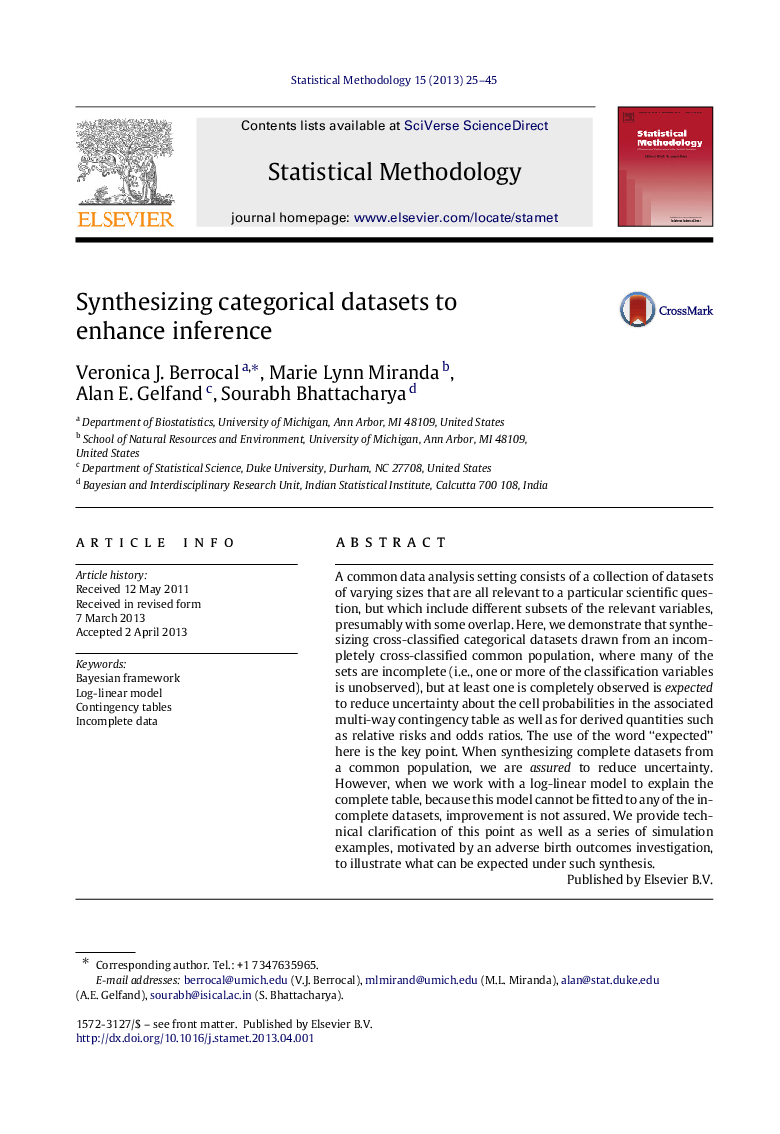| Article ID | Journal | Published Year | Pages | File Type |
|---|---|---|---|---|
| 1153218 | Statistical Methodology | 2013 | 21 Pages |
A common data analysis setting consists of a collection of datasets of varying sizes that are all relevant to a particular scientific question, but which include different subsets of the relevant variables, presumably with some overlap. Here, we demonstrate that synthesizing cross-classified categorical datasets drawn from an incompletely cross-classified common population, where many of the sets are incomplete (i.e., one or more of the classification variables is unobserved), but at least one is completely observed is expected to reduce uncertainty about the cell probabilities in the associated multi-way contingency table as well as for derived quantities such as relative risks and odds ratios. The use of the word “expected” here is the key point. When synthesizing complete datasets from a common population, we are assured to reduce uncertainty. However, when we work with a log-linear model to explain the complete table, because this model cannot be fitted to any of the incomplete datasets, improvement is not assured. We provide technical clarification of this point as well as a series of simulation examples, motivated by an adverse birth outcomes investigation, to illustrate what can be expected under such synthesis.
